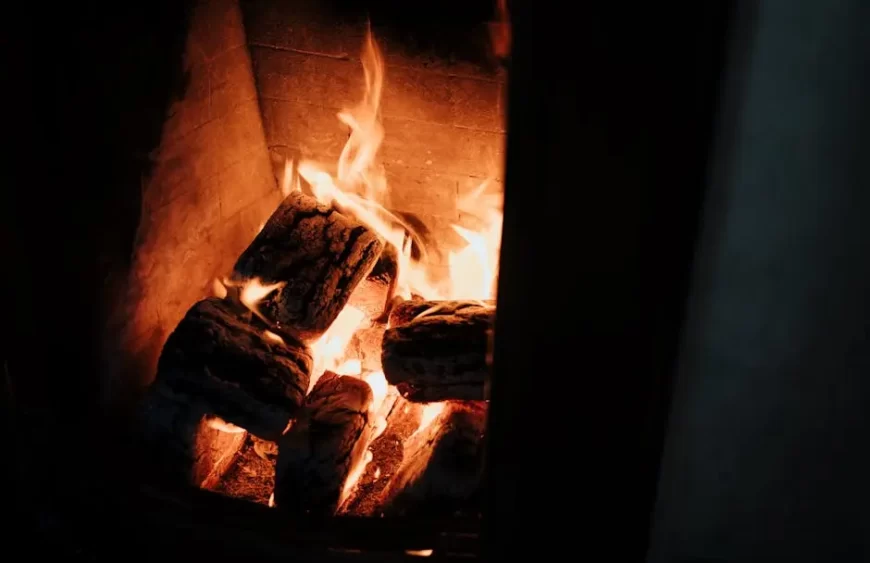12 Steps on How to Light a Pilot Light on a Fireplace Safely
December 6, 2024 2024-12-06 18:2412 Steps on How to Light a Pilot Light on a Fireplace Safely

12 Steps on How to Light a Pilot Light on a Fireplace Safely
Lighting a pilot light on a fireplace might seem daunting, especially if you’re new to it. But don’t worry! In this guide, we’ll walk through the steps effortlessly, ensuring your fireplace is safely lit and ready to provide warmth and comfort to your home.
1. Understanding the Components
Before you begin, it helps to familiarize yourself with the basic parts of your fireplace. Knowing where the pilot light and controls are can make the entire process easier.
Take a moment to identify key components such as the gas valve, control knob, and pilot light assembly. Understanding how these parts interact is crucial for a successful ignition. A useful resource for this step is to look into guides like How to Light a Gas Fireplace, which explain the parts of a gas fireplace in detail.
2. Ensuring Safety First
Safety should always come first. Make sure the area around your fireplace is clear and you are wearing appropriate safety gear if necessary.
Consider turning off any potential ignition sources around the fireplace and ensure that anyone else in the household is aware of the work you are about to do. Remember that gas leaks pose a significant safety risk, so if you ever smell gas, your first action should be to leave the premises and contact the fire department immediately, as mentioned in The Home Depot’s guide on gas fireplaces.
3. Inspecting the Fireplace
It’s important to check your fireplace for any signs of damage or blockages that could interfere with lighting the pilot light.
Thoroughly inspect the venting system and clean any visible debris or dust. This not only ensures a clear path for proper ignition but also facilitates better air circulation. If you’re unsure about potential issues, enlisting a professional inspection might be your best bet. Check out fireplace repair services to ensure everything is in working order and ready for operation.
4. Turning Off the Gas Supply
Locate your gas valve and ensure it is in the ‘off’ position before starting any work on your fireplace.
Turning off the gas supply prevents accidental ignitions while you work on the pilot light. Confirm that the control knob on your fireplace is also turned off, ensuring no unwanted gas flow during the process of relighting.
5. Finding the Pilot Light
Identify your fireplace’s pilot light which is usually located near the bottom center, often behind a small panel.
In some models, the pilot assembly might be covered with a decorative plate or panel. If your fireplace has such a cover, remove it carefully to gain access. Understanding the design of your specific fireplace model will make locating the pilot light more intuitive, as detailed in various guides on gas fireplaces.
6. Setting the Control Knob
Turn the control knob to the ‘pilot’ position to prepare for ignition. This allows the gas to flow to the pilot area.
Ensure you gently hold down the control knob in this position to allow for gas flow. This is a common procedure across most gas fireplace models and is fundamental to lighting a gas fireplace properly.
7. Using the Igniter Button
Press the igniter button while holding the control knob in the pilot position. This action should spark and light the pilot light.
If your fireplace does not have an automatic igniter, you may need to use a long lighter or match carefully to ignite the pilot light manually. Ensure you read your model’s manual for precise instructions on safe ignition. Remember, safety is paramount!
8. Observing the Light
Once the pilot light is lit, keep holding the control knob in place for a few seconds to ensure it stays on.
This pause allows the thermocouple, a safety device, to heat up and begin functioning properly. The thermocouple detects if the pilot flame is present and allows the gas flow to continue. If the pilot light goes out after you release the knob, repeat the previous steps and allow the thermocouple time to heat up.
9. Checking the Flame
Look at the color and size of the flame. A stable blue flame indicates proper functioning of the pilot light.
If the flame is large, yellow, or flickers excessively, it could be a sign of carbon build-up or a gas pressure issue. Such characteristics indicate that maintenance or professional adjustment is required to ensure optimal function. Consider professional services for comprehensive maintenance if you encounter issues beyond basic troubleshooting.
10. Switching the Control Knob to On
After ensuring the pilot light is stable, switch the control knob from the ‘pilot’ to the ‘on’ position.
This step is critical, as it allows gas to flow to the main burner when the fireplace is ignited. Remember, setting the control to ‘on’ lets you enjoy a fully functional fireplace, providing warmth and ambiance in your home.
11. Restoring the Gas Supply
Turn the gas supply back on, which allows the main burner to ignite with the pilot light acting as an ignition source.
Carefully check for any lingering smell of gas. If gas can be detected, turn off the supply immediately and contact a professional. Always ensure a well-ventilated space when working with gas appliances to prevent hazardous situations.
12. Regular Maintenance
Once your fireplace is successfully lit, consider scheduling regular maintenance and cleaning to ensure it continues to function safely and efficiently.
Regular check-ups help prevent common issues, extending the life and efficiency of your fireplace. If you are local to Dallas-Fort Worth, San Antonio, or Austin, consider professional fireplace services to keep your system in top shape and enhance overall home safety and comfort.







